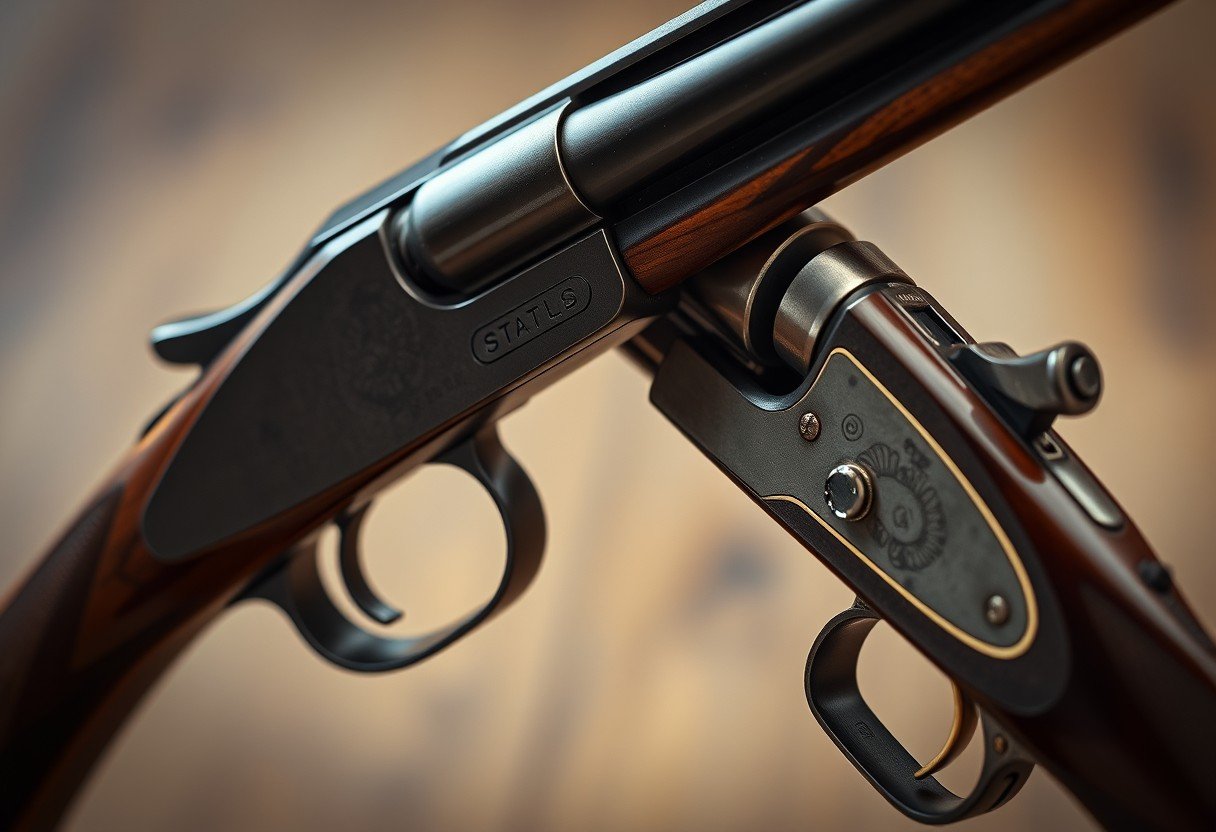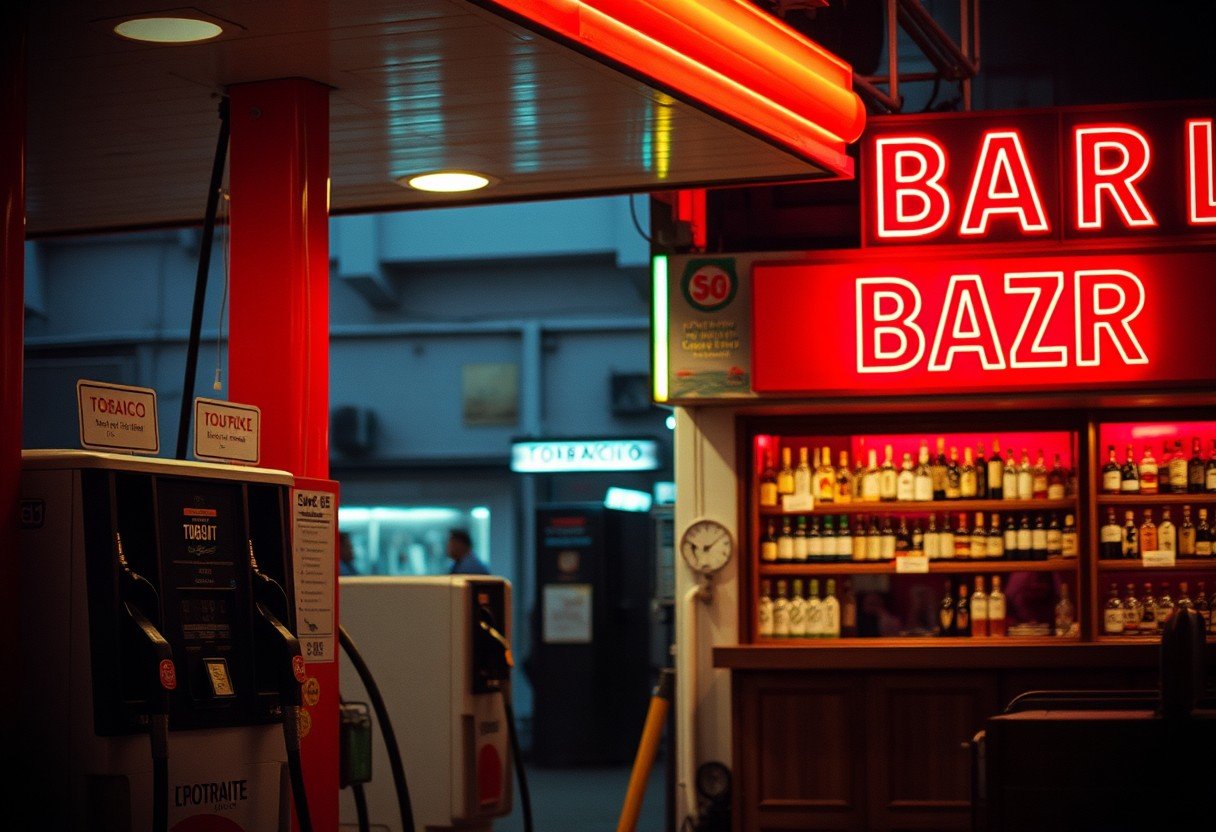If you’ve ever wondered how old firearms connect to new ones, you’re in the right place. The part of a modern firearm that does the same job as the lock on a muzzleloader is called the action. This core mechanism is responsible for the entire firing process, from loading a cartridge to firing the bullet. Understanding this link helps you appreciate the incredible engineering journey of firearms over the centuries, making you a more knowledgeable and safer shooter.
What Exactly is a Muzzleloader’s Lock?
On a traditional muzzleloader, the lock is the entire firing mechanism. It’s a system of springs, levers, and other parts that work together to create a spark or strike a cap, igniting the gunpowder. Think of it as the engine that starts the whole process.
The main job of the lock is to translate the pull of the trigger into a controlled explosion. In a flintlock, for example, the hammer (or cock) holding a piece of flint strikes a steel plate called the frizzen. This creates sparks that fall into a pan of priming powder, which then ignites the main powder charge in the barrel.
This entire sequence is mechanical and relies on simple but precise parts working in harmony. Components like the hammer, frizzen, and pan are all critical. If one part fails, the firearm won’t fire. It’s a beautiful example of early engineering, where every piece has a clear and vital role.
Introducing the Action: The Heart of a Modern Firearm
In a modern firearm, the lock’s function is performed by a more complex and integrated system called the action. The action is the true heart of any modern gun, controlling every aspect of its operation. While a muzzleloader’s lock only handles ignition, a modern action does much more.
The action is responsible for loading a fresh cartridge into the chamber, firing it, and then extracting and ejecting the empty casing. This all happens through the manipulation of the action, whether it’s by pulling a bolt, working a lever, or the automatic cycling of a semi-automatic firearm.
It’s a significant leap forward from the muzzleloader. Instead of manually loading powder and a ball down the barrel for every shot, the action manages self-contained cartridges, allowing for much faster and more reliable shooting.
How the Firing Mechanism Evolved
The evolution from a lock to an action is really a story about the evolution of ammunition and ignition. Muzzleloaders used loose powder and an external ignition source, while modern firearms use cartridges with the primer, powder, and projectile all in one unit. This change simplified the shooter’s job and made the firearm’s internal mechanism more sophisticated.
The core principle remains the same: something needs to strike something else to start the chemical reaction. However, the method has become far more efficient and reliable.
| Component | Muzzleloader Lock | Modern Action |
|---|---|---|
| Ignition Method | External spark or percussion cap | Internal firing pin or striker hits a primer |
| Ammunition | Loose powder and projectile | Self-contained cartridge |
| Reloading | Manual loading via the muzzle | Loads, fires, and ejects cartridges |
Key Differences in Operation and Design
While they serve the same fundamental purpose of firing a projectile, modern actions and muzzleloader locks are worlds apart in their design and operation. The biggest difference is complexity and the inclusion of safety features.
A muzzleloader’s lock is relatively simple, but a modern action is a highly engineered piece of machinery. This complexity allows for greater speed and reliability. Another major advancement is safety. Muzzleloaders rely almost entirely on the user’s careful handling to prevent accidents.
Modern actions, however, often include multiple safety systems built directly into the mechanism.
- Manual Safeties: A lever or button that physically blocks the trigger or firing pin from moving.
- Internal Safeties: Automatic mechanisms, like firing pin blocks, that prevent the gun from firing if it’s dropped.
- Decockers: A feature that allows the user to safely lower a cocked hammer without pulling the trigger.
These features make modern firearms significantly safer to handle and operate than their historical counterparts. The use of self-contained cartridges also removes many of the risks associated with handling loose black powder.
Common Types of Modern Firearm Actions
Just as there were different types of muzzleloader locks (like flintlock and caplock), there are many different types of modern actions. Each type offers a different balance of speed, reliability, and simplicity, tailored to the firearm’s intended use.
The most common types include bolt-action, lever-action, pump-action, and semi-automatic. For example, bolt-action rifles are known for their exceptional accuracy and reliability, making them a favorite among hunters and long-range shooters. Lever-action rifles offer a faster rate of fire and are iconic in Western firearms.
Semi-automatic actions use the energy from the fired cartridge to automatically eject the empty case and load the next round. This allows for very rapid follow-up shots. Despite their different designs, every one of these actions performs the same core function as the old muzzleloader lock: initiating the firing sequence.
Why Understanding This Matters for Shooters
Knowing the connection between a muzzleloader’s lock and a modern firearm’s action does more than satisfy curiosity. This knowledge has practical benefits that can make you a better, safer, and more confident shooter. When you understand how the firing system works, you are better equipped to perform maintenance and troubleshoot problems.
A deep understanding of the mechanics helps improve proficiency. You can better diagnose issues with your shooting technique by knowing how the trigger, hammer, or striker interacts. This insight allows you to make subtle adjustments to your grip and trigger pull, leading to greater accuracy and control. Ultimately, it fosters a more intuitive and effective shooting experience.
Frequently Asked Questions
Which part of a modern gun is like a muzzleloader’s lock?
The action is the modern equivalent. It houses the firing mechanism (like the firing pin and trigger assembly) that ignites the cartridge, serving the same core purpose as the lock on a muzzleloader.
How is a modern firearm’s action safer than a muzzleloader’s lock?
Modern actions incorporate built-in safety features like manual safeties, firing pin blocks, and grip safeties. These mechanisms are designed to prevent accidental discharges, a level of safety not found in traditional muzzleloader locks.
Do all modern guns use the same type of action?
No, there are many types of actions, including bolt-action, lever-action, pump-action, and semi-automatic. While they operate differently, they all perform the essential functions of loading, firing, and ejecting a cartridge.
What is the main job of a firearm’s action?
The action is the central operating system of a modern firearm. Its main job is to handle the entire firing cycle: chambering a live round, firing it when the trigger is pulled, and then extracting and ejecting the spent casing.
How did the ignition system change from muzzleloaders to modern guns?
The ignition system evolved from an external spark (flintlock) or percussion cap (caplock) igniting loose powder to an internal firing pin or striker. This pin strikes a sensitive primer contained within a modern cartridge, which provides a much more reliable and weatherproof ignition.








Leave a Comment